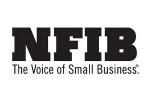CHICAGO — Dry cleaners, like other small- to mid-sized business owners have some of the same marketing opportunities open to them as only large businesses had just a few years ago. Learning how to effectively use these new tools, however, can take more time than many business owners believe they have available to them.
During a recent webinar, “How to Create a Digital Marketing Strategy that Delivers Results,” Donna Botti, owner of Delos, Inc., a firm located in the Philadelphia area that specializes in marketing and interactive communications, offered her guidance on how to avoid being overwhelmed by choices. Her talk was hosted by the National Federation of Independent Business (NFIB).
In Part 1, we examined the need to focus on knowing your audience and focusing on what you want your marketing to accomplish. Today, we’ll dive deeper into identifying your ideal clients and how best to connect with them.
Not Everyone Is Ideal
While it’s tempting to want to cast as wide a net as possible to draw in the biggest number of customers, Botti warns against this approach.
“Not everyone is your ideal client,” she says, “and they shouldn’t be your client. When thinking about who is your ideal client, and where your marketing efforts should focus, think about the business you want more of. Consider your current clients who you really enjoy working with. Why do they buy from you?”
Botti also cautions owners to think past the dollars and cents of the interactions with customers.
“Which ones bring you the most rewards?” she asks. “Not only the financial rewards, but the personal rewards, as well. Let’s face it — some people may make you think, ‘Financially, this is OK. We’re making money. But boy, do I hate dealing with that person.’ Sometimes it’s easier for us to think about this more from the perspective of who is not your client.”
To get this idealized customer in mind, Botti suggests trying to build as complete a picture of them as possible.
“Think about their characteristics. How old are they? Are they primarily men or women? What kind of car do they drive? What are their values? What other brands do they like? Get to know what they’re interested in, and speak directly to that.”
Once an owner has this ideal client in mind, it becomes easier to see the world from their point of view. Botti suggests asking three questions to provide guidance for marketing efforts:
- How are you solving their problems? — Determine what your business specifically provides to your ideal clients.
- What are their goals and their aspirations? — Your customers are coming to you for a reason; determine what that reason is.
- What are their challenges and their pain points? — ”When you can articulate some of these things,” Botti says, “you are going to have messaging that resonates with them. You want the audience to be thinking, ‘Oh, wait, that’s me! I should learn more.’"
Sometimes, the ideal client doesn’t consciously realize what they want — but good marketing can light their way. Botti offers the example of life insurance.
“I don’t really want to buy life insurance,” she says. “What I really want is safety and security for my family. Sometimes, you have to go into the more emotional component of what someone is actually looking for deep down at the end of the day, not just the actual transaction that you’re going to get.”
Crafting the Right Message
Once these questions are answered, it’s time to build a message for your digital marketing that will resonate with your ideal clients, Botti says. There are three core components that must be considered when crafting an effective message:
- The Hook — This is the headline and the subhead, or the subject line, of your message. “You want people to stop the scroll and look at what you’re offering,” Botti says.
- The Story or Value — “This is where you tell an interesting and compelling story about how you can provide the transformation that they are looking for, or the piece of information of value that they are looking for,” Botti says. “These can be little, short segments. You’re not writing an epic journey here.”
- The Offer — This is also known as the call to action. “The call to action is what do you want them to do next,” Botti says. “I want you to watch this video. I want you to sign up for this event. I want you to read this article we’ve written. I want you to comment in the post. You should always have a next step for someone to guide them along the way. Otherwise, they’re just going to move on. While some of them will figure out on their own what to do next, we want the path of least resistance. You want to make it easier for people to do business with you than not, so any friction along the way of that process is going to lose people.
Botti says that, rather than perfectly hitting the target, owners should accept that there will be a process of dialing in effective marketing efforts.
“It is a process that will get refined over time as circumstances and your business change,” she says. “Think the message that you gave to a customer pre-pandemic versus now. It might have to be a bit different. Your business has changed. Your circumstances have changed.”
She also says that, as owners get more comfortable with marketing, they can widen their scope.
“This process can be repeated for multiple audiences,” she says, “because many of you are going to have a couple of different types of ideal clients. But my recommendation is that you start with the area where you want to increase your business the most and work from there.”
Using the Content You Already Have
The idea of having to come up with an effective message and material to support a marketing campaign can cause many small-business owners stress. Botti suggests that this material might already exist.
Botti told the story of a new client who came to her for marketing help. This client made custom products for an industry and had people coming into their shop for training. While they thought that this process limited their time for marketing, Botti told them to get someone to make videos of the people going through their company. “We took that footage and made six months’ worth of content for them on different things,” she says, “because it was something they were already going to do.”
By examining the daily interactions with clients, business owners might be surprised about what they actually have available to them.
“I want you to think about what you already have,” she says. “You have content. What are you already saying and doing? Every day, you are providing content to people because they ask you questions. You explain how something works. I like to use the three times (3x) rule — if you find yourself telling the same story or providing the same information three or more times, that is content that a general audience of you needs to know, so it belongs on your website or on social media. You should be getting it out there. So, make it part of your processes to pay attention to the questions that people are asking you.”
Putting this information online, Botti believes, is an excellent way to quickly — and inexpensively — extend the digital footprint of your business.
“This is a great way to get found in search engines,” she says. “You know what questions people have all the time — do you have an article on that? We have clients who have created one or more strategic pieces of content, because these things that really are in line with what their ideal client needs or wants to know in order to do business with them.”
Come back Tuesday, when we’ll examine what should be the hub of your digital marketing efforts, and how you can own your communications channels. For Part 1 of this series, click HERE.
Have a question or comment? E-mail our editor Dave Davis at [email protected].




















































































































































